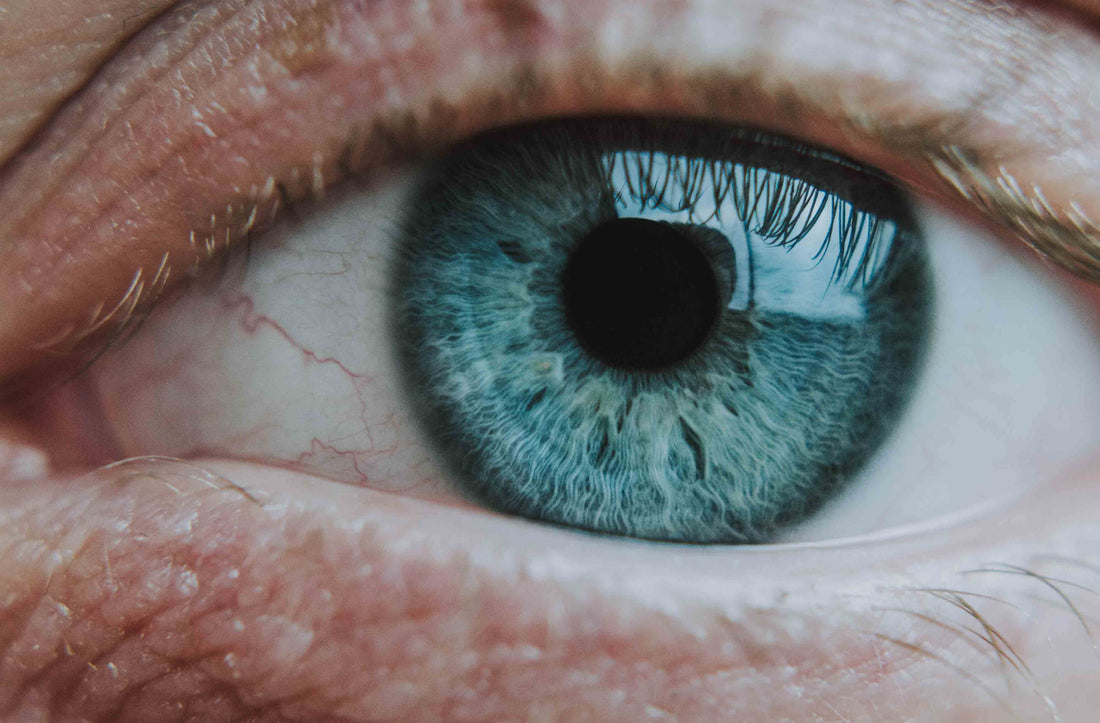
A glossary of common eye health issues
Share
Angular Erosion (chapping of the eyelids)
Eyelids can get chapped too, just like lips, and this painful breakdown of the skin occurs at the outer angle of the eye, where the upper and lower lids meet, and it’s often associated with a bacterial infection. A form of blepharitis, angular erosion tends to persist if it's not treated.
Bell’s Palsy (weakness in the facial muscles)
A sudden weakness in all or part of the facial muscles is called Bell's palsy. Although its onset, which often has no apparent cause, is sudden and terrifying, Bell's palsy often goes away by itself within a few weeks. But, sometimes Bell's palsy affects the orbicularis muscle, the muscle that closes the eyelids, hampering the eye's ability to close all the way. Then, because the eyes are constantly exposed to the air, they become dry and irritated.
Blepharospasm (tight squeezing of the eyelids)
The key word here is spasm. Like a spasm of any other muscle, blepharospasm is an involuntary tight squeezing of the eyelids. This may be a symptom of Parkinsonism, or a re-irritation, or there may be no apparent cause. In minor cases, it's mainly a nuisance; but in its more serious form, blepharospasm can be disabling.
Dermatochalasis (drooping eyelid skin)
Over the years eyelid tissue loses its elasticity. Dermatochalasis is an age-related drooping or sagging of the skin in the eyelid. (In the upper eyelid, this is commonly called hooding. In the lower eyelid, many people use the accurate but unflattering term bags.)
Dermatochalasis in the upper eyelid ranges from a mild loss of the normal eyelid fold, mainly a cosmetic issue, to extensive sagging, in which eyelid tissue completely covers the eyelashes and eyes and may even interfere with vision.
Ptosis (drooping eyelid)
Much less common and more complicated than dermatochalasis is drooping of the entire eyelid, not just the skin. This condition, called ptosis of the eyelid, usually occurs when the nerve that works the levator muscle (which raises the eyelid) is damaged. The muscle can be weakened by stroke or a condition such as myasthenia, and even by normal aging.
Entropion and Ectropion (the edge of the eyelid turning in or out)
Sometimes the lower eyelashes turn inward and brush against the eye; this is called entropion. Sometimes they turn outward, so that the eyelid doesn't close properly; this is called ectropion. Either way, the problem is irritating.
Entropion causes the lashes to rub against the conjunctiva and the cornea, irritating the eye. Ectropion exposes the conjunctiva and cornea to the air, causing dryness. Entropion sometimes begins when the
eye is already irritated by something else. You blink hard, trying to get rid of whatever's irritating your eye, and it just gets worse.
Myokymia (twitching eyelid)
Have you ever felt your eyelid jump, or seen it twitch in the mirror? This rapid twitching, called myokymia, though usually temporary, can become a nuisance if it persists. You can stop it by pressing your finger over the twitching area, but it will probably start up again when you take your finger away. Myokymia is most often caused by stress or fatigue and is not a sign of disease.
Shingles (nerve pain and blistering crusty eyelids)
Remember when you had the chicken pox? Well, that virus is still around, somewhere, in your body. And it may have other cards to play: it's the same virus that causes herpes zoster, or shingles, in adults. Anyone who has ever had chicken pox may develop shingles years afterward.
Remember how bad those chicken pox were? Shingles is worse. It can cause pain, often severe pain, plus blistering and crusting of the skin.
These blisters follow the route of a sensory nerve, so you develop pain and then blisters on the skin. If the sensory nerve on your upper face is affected, the pain and blistering will blanket your forehead and even the eyelids. Mercifully, although the pain is miserable, the eyes themselves are usually spared. However, in a few people, especially if the nerve to the end of the nose is involved, this sometimes affects the eye - usually after the skin lesions begin to get better.
If you have shingles on your face, you need to see your eye doctor. Without treatment, if your eyes are affected, you're at risk for developing uveitis, glaucoma, and other conditions that could cause permanent harm.
Hordeola and Chalazia (sties or lumps on the eyelid)
A sty, also called hordeolum, is an infection on your eyelid: a red, swollen area that hurts when you touch it. Sties can crop up on the outside of the eyelid at the base of a hair follicle (an external hordeolum, due to an infected sebaceous gland) or on the eyelid's inner surface (an internal hordeolum, due to an infected Meibomian gland).
Sties can go away by themselves or with treatment. However, sometimes an internal sty evolves into a chalazion, a usually painless lump that results from the body's inflammatory reaction to oily secretions in the clogged Meibomian gland.
Chalazia typically don't affect vision and are essentially benign and more of cosmetic nuisance than anything else. However, if one of these lumps is located higher, in the middle of the upper eyelid, it can flatten the central cornea and distort vision.